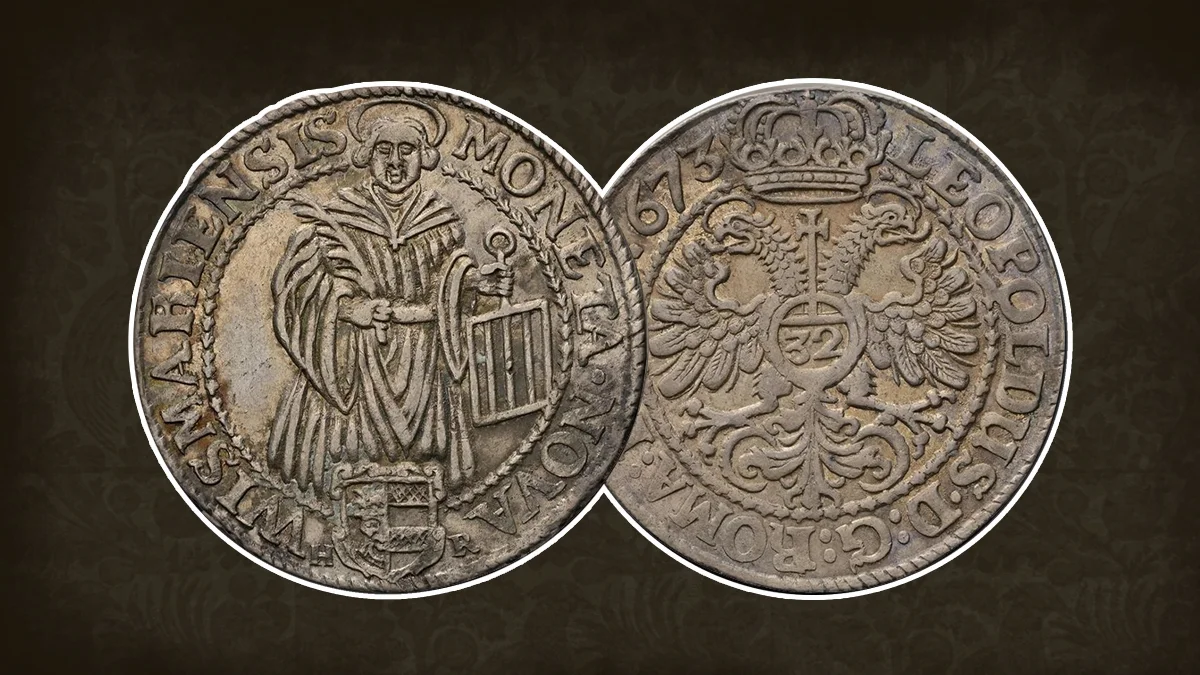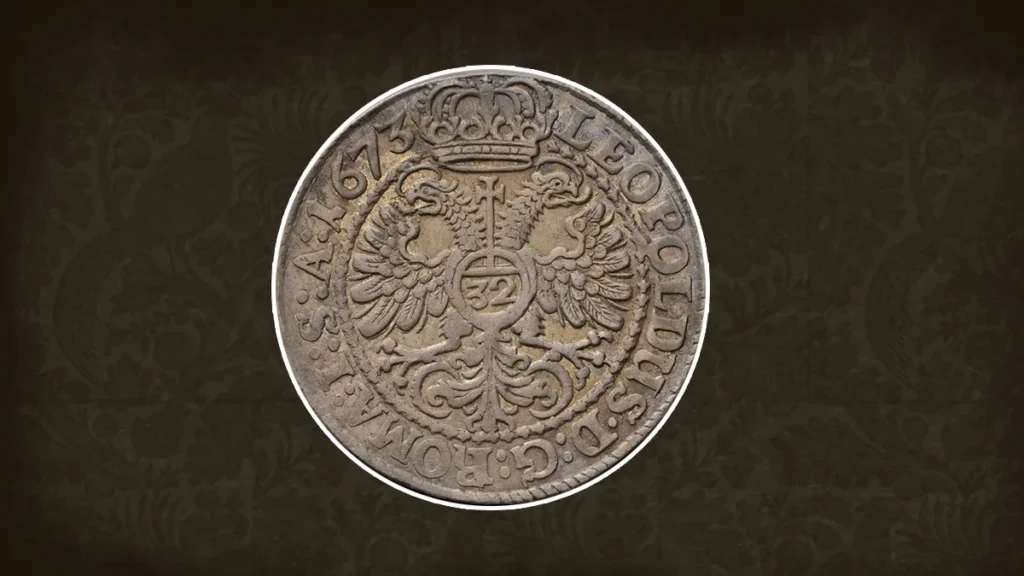
Throughout history, it has been a tradition to feature patron saints on coins, and the German city of Wismar followed this custom. Wismar, which is on Germany’s Baltic coast, has a rich history. When the city was established in 1226, it was an integral part of the famous and wealthy Hanseatic League. Many German states and even Sweden ultimately conquered Wismar.
The 1673-HR Wismar Taler is one of the most interesting pieces of Wismar’s numismatic history. The L.E. Bruun Part II sale of Stack’s Bowers Galleries in Zürich on March 15, 2025, will have this rare and unique coin.
Wismar Under Swedish Rule
After the disastrous Thirty Years’ War founded with the Peace of Westphalia, Wismar joined Sweden in 1648. Wismar was only ruled by Sweden until 1803 when it was given to Mecklenburg-Schwerin in return for 1,258,000 Riksdalers.
The Holy Roman Emperor gave Wismar the authority to mint even though it was a Swedish colony. Coins struck at Wismar during this period had the name of the Holy Roman Emperor rather than the Swedish ruler because the city’s rulers were unable to give up their privileges.
The Design of the 1673 Wismar Taler
The Wismar Taler of 1673 is an excellent example of this unique history.
- Reverse Side: The coin’s reverse side is dominated by the image of the Holy Roman Emperor Leopold I’s double-headed eagle. His name is shown clearly, highlighting Wismar’s ties to the empire rather than its Swedish overlords.
- Obverse Side: Wismar’s patron saint, St. Lawrence (also known as Laurentius or Lars), is shown effectively on the coin’s front. He is shown holding a gridiron, representing the death of him.
The Story of St. Lawrence

St. Lawrence lived in the third century AD, one of the most respected Christian martyrs. In 258 AD, when Christians were being persecuted in Rome, he was given a death sentence which included burning alive on a huge gridiron. Legend has it that Lawrence had incredible bravery and even made an observation while being executed, stating, “Turn me over; I’m done on this side.” This made him the patron saint of comedians, cooks, and chefs.
The city arms of Wismar appear on the coin under the image of St. Lawrence. There are two parts to the shield:
- The right side has striped fields, a common heraldic symbol.
- A crowned bull on the left side means bravery and courage.
The initials “H” and “R,” which represent Hans Ridder, the Wismar mintmaster from 1670 to 1674, are located on either side of the municipal arms.
A Rare Collectible
The Wismar Taler from 1673 is a very rare coin. One of the most famous examples is the one up for auction at Stack’s Bowers, which has the grade NGC AU53. It is rare to find coins from that period on the market, especially when they are in such good shape. This work may represent the best available for decades.
This auction on March 15, 2025, provides a rare chance for anyone interested in purchasing a piece of Wismar’s interesting history.
Frequently Asked Question
1. Why did Wismar’s coins feature the Holy Roman Emperor instead of the Swedish ruler?
Even though Wismar was under Swedish control, it retained its minting rights from the Holy Roman Emperor. The city’s Officials in the city made sure that the emperor’s name, not the Swedish king’s, showed on their coins.
2. What is unique about the Wismar Taler of 1673?
This coin has historical value, is uncommon, and is in superb shape. It has a beautiful design with St. Lawrence on one side and the double-headed eagle of the Holy Roman Emperor on the other.
3. Why was St. Lawrence on the coin and who was he?
In 258 AD, a Christian martyr named St. Lawrence was roasted alive on a gridiron. He was the city’s patron saint and represented on its coinage because of his association with Wismar.
4. What does the coin’s “HR” represent?
The letters “H” and “R” represent Hans Ridder, who served as the mintmaster of Wismar from 1670 to 1674.
Final Thoughts
A window into an important period of European history, the Wismar Taler of 1673 is more than just a coin. A depth of religious and cultural value can be seen in the image of St. Lawrence, while the design represents the complicated political climate of Wismar under Swedish domination. This coin is one of the highlights of the L.E. Bruun Part II sale because of its rarity and historical value.
To explore every lot in the next auction, go to StacksBowers.com.
